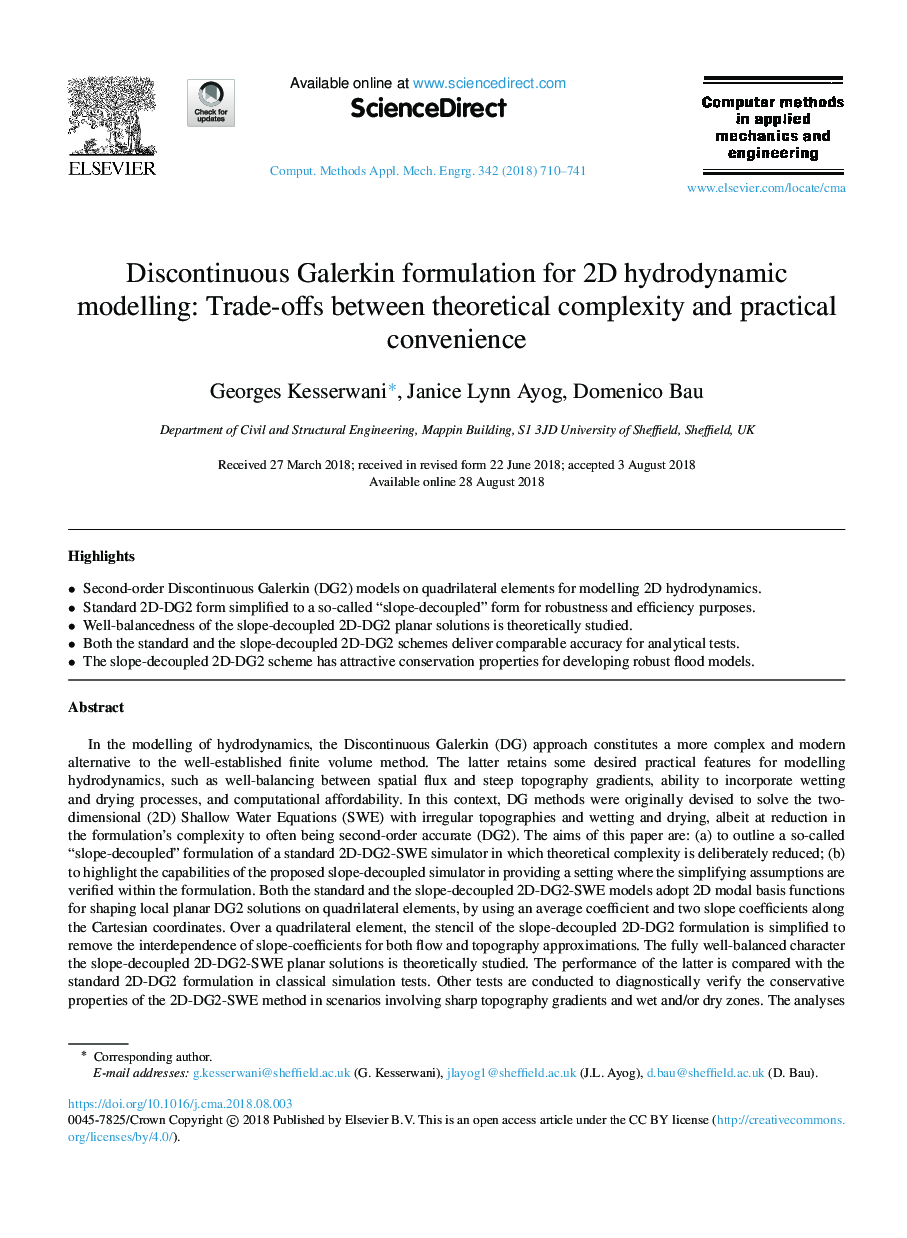| کد مقاله | کد نشریه | سال انتشار | مقاله انگلیسی | نسخه تمام متن |
|---|---|---|---|---|
| 9952348 | 1447393 | 2018 | 32 صفحه PDF | دانلود رایگان |
عنوان انگلیسی مقاله ISI
Discontinuous Galerkin formulation for 2D hydrodynamic modelling: Trade-offs between theoretical complexity and practical convenience
دانلود مقاله + سفارش ترجمه
دانلود مقاله ISI انگلیسی
رایگان برای ایرانیان
موضوعات مرتبط
مهندسی و علوم پایه
مهندسی کامپیوتر
نرم افزارهای علوم کامپیوتر
پیش نمایش صفحه اول مقاله

چکیده انگلیسی
In the modelling of hydrodynamics, the Discontinuous Galerkin (DG) approach constitutes a more complex and modern alternative to the well-established finite volume method. The latter retains some desired practical features for modelling hydrodynamics, such as well-balancing between spatial flux and steep topography gradients, ability to incorporate wetting and drying processes, and computational affordability. In this context, DG methods were originally devised to solve the two-dimensional (2D) Shallow Water Equations (SWE) with irregular topographies and wetting and drying, albeit at reduction in the formulation's complexity to often being second-order accurate (DG2). The aims of this paper are: (a) to outline a so-called “slope-decoupled” formulation of a standard 2D-DG2-SWE simulator in which theoretical complexity is deliberately reduced; (b) to highlight the capabilities of the proposed slope-decoupled simulator in providing a setting where the simplifying assumptions are verified within the formulation. Both the standard and the slope-decoupled 2D-DG2-SWE models adopt 2D modal basis functions for shaping local planar DG2 solutions on quadrilateral elements, by using an average coefficient and two slope coefficients along the Cartesian coordinates. Over a quadrilateral element, the stencil of the slope-decoupled 2D-DG2 formulation is simplified to remove the interdependence of slope-coefficients for both flow and topography approximations. The fully well-balanced character the slope-decoupled 2D-DG2-SWE planar solutions is theoretically studied. The performance of the latter is compared with the standard 2D-DG2 formulation in classical simulation tests. Other tests are conducted to diagnostically verify the conservative properties of the 2D-DG2-SWE method in scenarios involving sharp topography gradients and wet and/or dry zones. The analyses conducted offer strong evidence that the proposed slope-decoupled 2D-DG2-SWE simulator is very attractive for the development of robust flood models.
ناشر
Database: Elsevier - ScienceDirect (ساینس دایرکت)
Journal: Computer Methods in Applied Mechanics and Engineering - Volume 342, 1 December 2018, Pages 710-741
Journal: Computer Methods in Applied Mechanics and Engineering - Volume 342, 1 December 2018, Pages 710-741
نویسندگان
Georges Kesserwani, Janice Lynn Ayog, Domenico Bau,